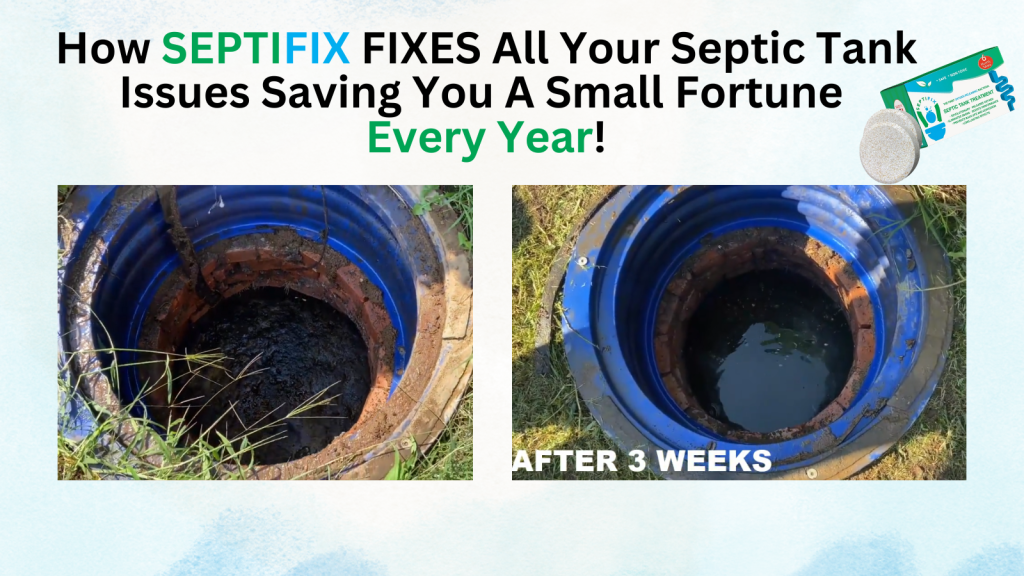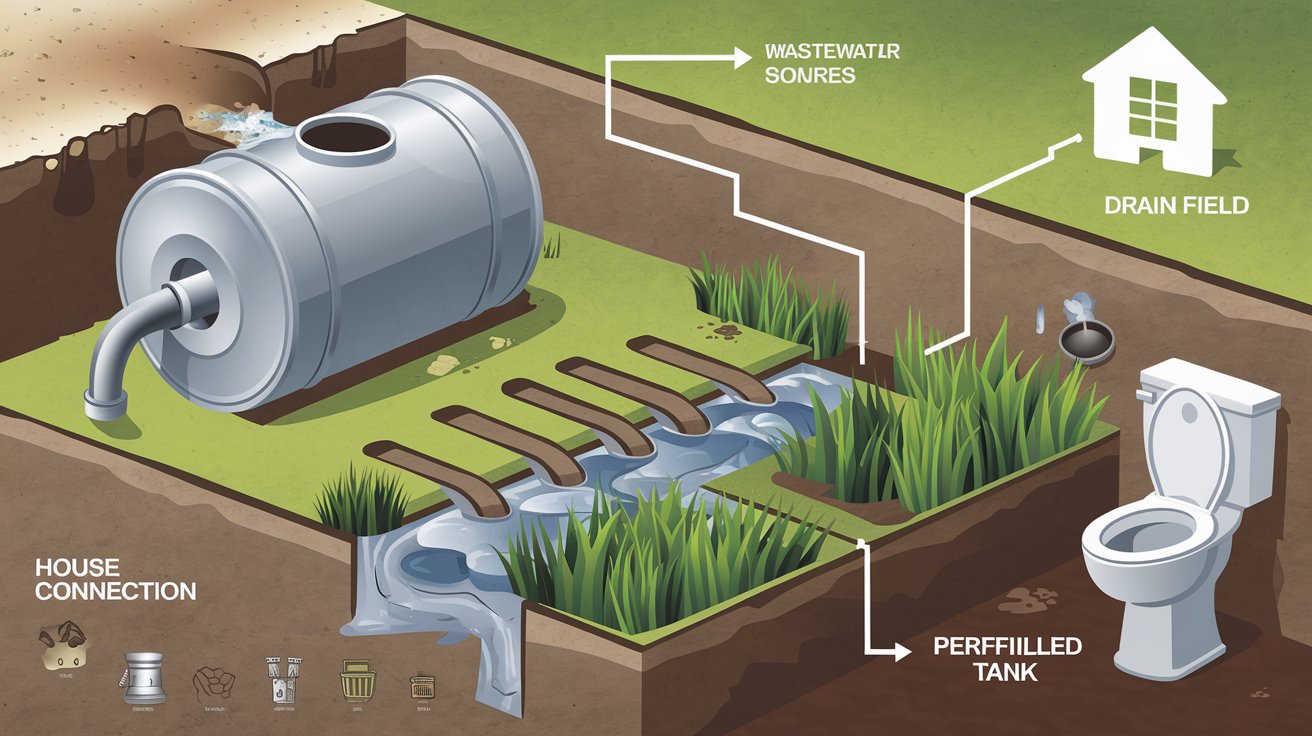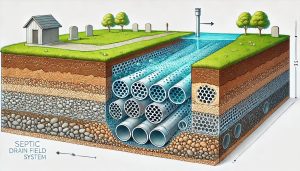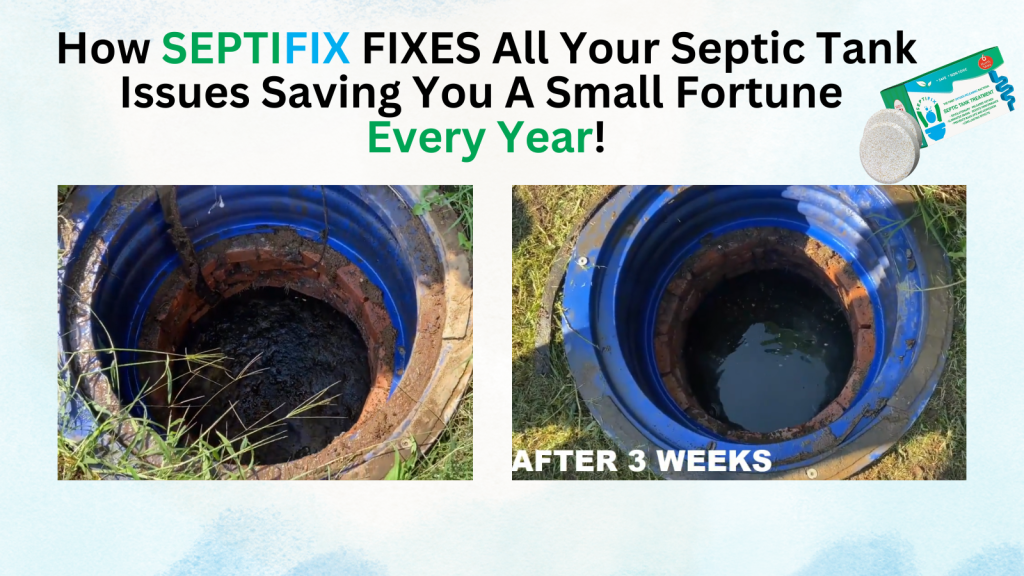Foul odors around the property can be more than just an unpleasant nuisance; they often signal underlying issues, particularly with your septic system. Understanding the causes of these odors is crucial for maintaining a healthy living environment. In this article, we will explore the common sources of septic odors, how to identify them, and effective solutions to mitigate these issues. By the end, you’ll be equipped with knowledge to tackle any odor problems head-on.
Table of Contents
- Understanding Septic Systems
- Common Causes of Foul Odors
- Identifying the Source of Odors
- Solutions and Preventative Measures
- Additional Preventative Strategies
- Frequently Asked Questions About Foul Odors Around Septic Systems
- Septifix
- Septic Permit Links by State
Understanding Septic Systems
Septic systems are essential for homes that are not connected to municipal sewer systems. They treat and dispose of wastewater on-site, ensuring that harmful contaminants do not enter the groundwater. A typical septic system consists of a tank and a drain field. Wastewater flows into the tank, where solids settle at the bottom, and liquids flow out to the drain field for further treatment.Regular maintenance is vital to prevent odors from developing. Neglecting your septic system can lead to serious health hazards and costly repairs. Understanding how your septic system works can help you recognize when something is amiss.
Common Causes of Foul Odors
1. Septic Tank Issues
One of the primary causes of foul odors is problems within the septic tank itself. Overfilling, leaks, or blockages can lead to unpleasant smells. If the tank becomes too full, gases may escape through vents or even back up into your home. Regular pumping of the septic tank every 3 to 5 years is crucial to prevent these issues.
- Overfilling: When solids accumulate beyond capacity, they can create pressure that forces gases out.
- Leaks: If there are cracks in the tank, sewage can escape into the ground, leading to odor issues.
- Blockages: Clogs in pipes leading to or from the tank can cause backups and unpleasant smells.
2. Drain Field Problems
The drain field is where treated wastewater disperses into the soil. If this area becomes saturated or damaged, it can cause odors to rise to the surface. Signs of drain field problems include pooling water or lush vegetation in one area compared to others. These symptoms indicate that the system is not functioning correctly.
- Saturation: Excess water prevents proper drainage, causing odors.
- Vegetation Changes: Unusually green patches may indicate leaks or over-saturation.
3. Plumbing Issues
Foul odors can also stem from plumbing problems in your home. Faulty pipes, broken seals, or dry traps can allow sewer gases to escape into your living space. Inspecting your plumbing for leaks or damage is essential in identifying the source of unpleasant smells.
- Broken Seals: These can occur around toilets or sinks, allowing gases to escape.
- Dry Traps: If a sink isn’t used often, water can evaporate from traps, allowing smells to enter your home.
Identifying the Source of Odors
1. Signs of Septic Problems
Recognizing signs of septic issues early can save you from more extensive repairs later on. Key indicators include:
- Slow Drains: If water drains slowly from sinks or toilets, it may indicate a blockage.
- Wet Spots in the Yard: Unusual wet areas near the drain field can signal a malfunction.
- Gurgling Sounds: Unusual noises from plumbing fixtures often suggest air trapped in pipes due to blockages.
2. Conducting a Smell Test
To locate the source of foul odors, conduct a smell test around your property:
- Start Near Your Septic Tank: Begin at the septic tank location and check for strong smells.
- Move Towards Your Home’s Plumbing Fixtures: Follow any odor trails towards sinks and toilets.
- Pay Attention to Areas with Stronger Smells: This will help pinpoint where problems may lie.
Solutions and Preventative Measures
1. Regular Maintenance
Regular maintenance is key to preventing foul odors from developing around your property. Schedule routine inspections and pump your septic tank every 3 to 5 years, depending on usage.
- Keep Records: Maintain a log of when maintenance was performed for future reference.
- Educate Family Members: Ensure everyone in your household understands what should and shouldn’t go down drains.
2. Professional Inspections
Hiring professionals for thorough inspections can identify potential problems before they escalate. They have the expertise and tools necessary for comprehensive assessments.
- Annual Check-Ups: Consider annual inspections as part of your home maintenance routine.
- Use Qualified Technicians: Always hire licensed professionals who specialize in septic systems for inspections and repairs.
3. DIY Tips
Homeowners can also take proactive measures to maintain their septic systems:
- Avoid Flushing Non-Biodegradable Items: Items like wipes or feminine products can cause clogs.
- Use Septic-Safe Products: Choose cleaning products that won’t harm beneficial bacteria in your system.
- Monitor Water Usage: Be mindful of how much water you use; excessive water can overload your system.
Additional Preventative Strategies
1. Landscaping Considerations
Your landscaping choices can also impact your septic system’s health:
- Planting Trees Wisely: Avoid planting trees with invasive root systems near your septic tank or drain field as roots can infiltrate pipes and cause blockages.
- Proper Drainage: Ensure that rainwater does not pool near your septic system by grading land away from it.
2. Educating Yourself About Your System
Understanding your specific septic system type (conventional vs. alternative) will help you manage it better:
- Know Your System’s Capacity: Familiarize yourself with how much waste it can handle based on household size.
- Learn About Local Regulations: Different areas have different regulations regarding septic systems; being informed will help you stay compliant.
Conclusion
Foul odors around your property often indicate problems with your septic system or plumbing. By understanding common causes and identifying signs early, you can take action before issues worsen. Regular maintenance and professional inspections are essential for keeping your system functioning properly.Need help with septic tank maintenance? Check out our product reviews! This enhanced article provides a comprehensive overview while maintaining SEO best practices and readability guidelines. For further information on septic system maintenance or troubleshooting tips, consider exploring our related articles on septic system care and common plumbing issues. For authoritative resources, visit EPA guidelines on septic systems or check out septic tank maintenance manuals.
Frequently Asked Questions About Foul Odors Around Septic Systems
Why does my septic tank smell?
Septic tank smells can arise from various issues, including overfilling, poor ventilation, or blockages in the system. If you notice a foul odor similar to rotten eggs or sewage, it often indicates that the tank needs to be pumped or that there is a problem with the system’s operation.
How can I tell if my septic system is causing odors in my home?
If you experience persistent odors inside your home, check for signs such as slow drains, gurgling sounds from fixtures, or wet spots in your yard. These symptoms suggest that your septic system may not be functioning correctly and could be releasing odors into your living space.
What are the common causes of septic odors?
Common causes of septic odors include:
- An overfilled septic tank
- Clogged pipes or drains
- Poor ventilation of the septic system
- Leaks or cracks in the tank
- Infrequent pumping and maintenance
How often should I pump my septic tank to prevent odors?
It is generally recommended to pump your septic tank every 3 to 5 years, depending on household size and usage. Regular pumping helps remove accumulated solids and reduces the risk of odor-producing gases escaping from the system.
What can I do to eliminate foul smells from my septic system?
To eliminate odors, ensure regular maintenance by scheduling inspections and pumping when necessary. Additionally, avoid flushing non-biodegradable items and use septic-safe products to maintain a healthy balance of bacteria in the tank. If odors persist, consider consulting a professional to inspect for leaks or other issues.
Directory | Washington Septic Service Providers | Part 2
Directory | Washington Septic Service Providers | Part 1
DIY Repairs Are Always Cheaper
Septic Regulations in Rural Areas: Essential Guide for Rural Property Owners
The Role of Perforated Pipes in Drain Fields
What Happens During a Pumping Service?
Septic Tanks vs. Sewer Systems | Choosing the Right Option
Directory | Virginia Septic Service Providers | Part 2
Septifix










